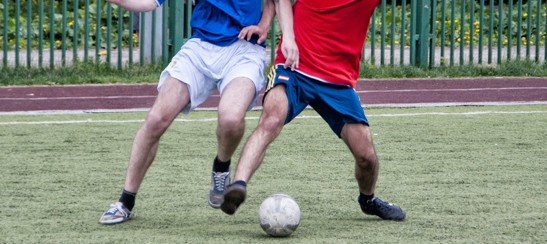How Specific Should We Train?
As athletes become more specified in their sporting activities, the question of how to train becomes more important. More specifically, what sort of movements are the most important for success in the athlete’s specific sport?
In other words, what sort of usefulness does a basketball player have in swinging a baseball bat? Or a golfer throwing tight spirals with a football? Should the basketball player only practice free throws? Should the golfer only go to the driving range?
Even if the athlete restricts herself to sports-specific movements, should those movements be constantly repeated in the gym or on the field? Or should multiple movements always be a part of training?
Both/And
The answer, in truth, is a both/and.
For starters, function is a key component of all movement. At a basic level, your training must reflect the movements you will make in your specific sport. In that sense, a basketball player should never focus his entire training regimen around a batting cage, and the golfer shouldn’t expect to shoot lower scores if he only plays pick-up football games.
Training by using the specific movements of your sport helps build power and aerobic conditioning for that sport. It increases speed and agility in addition to preventing sport-specific injuries.
But the value of sport-specific training does not mean an exclusive sport-specific approach to training. While basketball players need to practice jump shots and free throws and golfers need to practice their swings, there are also a wide variety of functional training exercises required at a more general level. The basketball player needs endurance to run the court; the golfer needs a different form of endurance to remain strong over the course of 18 holes.
Even more, the connected nature of the body means that certain movements made outside of the sport-specific actions can have an influence on your sport-specific movements. In that sense, a varied but functional approach to training is important.
Training Non-Specifically
Likewise, cross training can be beneficial as well. It balances your specialization and can even make you stronger in sport-specific ways. You might have heard stories about football players doing ballet or pole vaulters doing gymnastics. In both instances, the ability to cross train opens up different muscle groups. It can increase the limits around your body and translate well to your preferred sport, not to mention the competitive edge it gives you as you maintain high levels of function.
So what’s the word on sport-specific training? Do it, for sure, but not at the expense of a well-rounded approach. Function is the key here. Sport-specific activities keep you on top of your game when it comes to the functional requirements of your sport. But don’t forget to balance these activities with non-related training activities, as those non-related activities can provide new approaches and better performance in your preferred sport.
In other words, the basketball player shouldn’t exclusively swing a baseball bat, but that doesn’t mean batting practice can’t help a basketball player. Likewise, the golfer shouldn’t formulate a training regimen around backyard football, but that doesn’t mean throwing a football doesn’t help the complete picture in the golfer’s game.
Image Credit: Artur Potosi via Creative Commons



